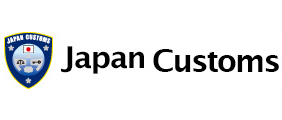Temporary Admission Procedures
(Exemption from Customs Duty for Re-Exportation)
1. Outline of the System of Temporary Admission
Japan acceded to the ATA Convention*1 in 1973. Goods imported from contracting countries and territories can generally be subject to a procedure on the basis of the ATA Convention and be exempted from Customs duty and excise taxes payable. Goods imported from non-contracting countries and territories or goods which are NOT eligible for the application of the Convention*2 can also be exempted from Customs duty and excise taxes payable, provided that such goods satisfy the conditions stipulated in Article 17 of the Customs Tariff Law (Exemption from Customs Duty for Re-Exportation).
*1 ATA Convention
The ATA Convention went into effect in 1963, and it adopts common procedures for the temporary duty-free
importation of goods (temporary admission) in order to afford considerable advantages to international commercial
and cultural activities and to secure a higher degree of harmony and uniformity in the Customs systems of the contracting
countries and territories.
2. Goods Eligible for Temporary Admission
(1) ATA Convention
Each contracting country or territory shall accept the ATA carnet, whose period of validity shall not exceed one year from the date of issue, in lieu of its national Customs documents for goods imported, such as professional equipment, samples of goods, goods for use at exhibitions and others, under the condition of temporary admission, and use the carnet as due security for the amount of Customs duty and excise taxes payable.
*Click here for details about the ATA carnet
(2) Article 17 of the Customs Tariff Law (Exemption from Customs Duty for Re-Exportation)
In addition to professional equipment, samples of goods, goods for use at exhibitions, and others which are covered by the ATA Convention, the following goods are examples of goods eligible for temporary admission.
[i.e.]
*2 Goods to be processed specifically (curving, coating, etc.)
*2 Goods to be repaired
Articles for scientific research
Articles for testing
Articles to be used by any person exporting or importing goods, for testing the capacity or performance of,
or for examining the quality of, the goods so exported or imported
Automobiles, vessels, aircrafts, or any other goods, which are brought into Japan by any person with him or her,
or imported separately by him or her as unaccompanied goods, which enter Japan for a purpose other than for
the removal of his or her residence to Japan and which are intended for his or her own personal use.
3. Procedures on Temporary Admission
(1) ATA Convention
Any person, who is to enjoy the benefit of exemption from Customs duty and excise taxes on goods imported temporarily, shall show the ATA carnet to Customs at the time of his or her import declaration and obtain an import permit from Customs. The person shall also show the ATA carnet to Customs again at the time of his or her export declaration and obtain an export permit within the period of the valid ATA carnet (maximum period: one year).
(2) Article 17 of the Customs Tariff Law (Exemption from Customs Duty for Re-Exportation)
If the ATA carnet is not used, the person shall submit the document stipulated in the Customs Tariff Law at the time of his or her import and export declarations for the goods to be exempted from Customs duty and excise taxes and obtain import and export permits from Customs. A security for Customs duty payable may be required at the time of the import declaration.
In addition, after the person exports the goods, the person shall report to Customs where the person obtained the import permit to that effect.
4. Issue of the ATA Carnet
The ATA carnet is issued by the Japan Commercial Arbitration Association in Japan.
If you have any questions about procedures for issuance of the carnet, please contact the Association
(https://carnet.jcaa.or.jp/). *Click here for details.

